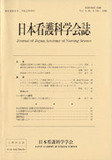Japanese
English
- 販売していません
- Abstract 文献概要
- 参考文献 Reference
要旨
1981年3月より1983年11月にかけて東大病院重症救急患者病室の床細菌叢を検索した。0.2%グルタールアルデヒド(GA)による定期的消毒と,0.1%アルキルジアミノエチルグリシン塩酸塩(TG)による毎朝のモップ清掃により,比較的長期間床細菌数を低く保った。床細菌数が多い1981年検出細菌の種類は頻度の高い順にAcinetobacter sp., Xanthomonas maltophilia, Pseudomonas aeruginosa, Serratia sp., P. putidaなどである。最も検出率の高いAcinetobacter sp. とX. maltophiliaのGA及びTGによる定期的消毒後の経時的床分布を見ると,X. maltophiliaは患者ベッド周辺を起点とし病室スタッフの動きに連動して広がる傾向が見られた。汚染源として患者と関係したものが推定される。一方Acinetobacter sp.は,定期的消毒直後より病室の広い範囲から検出された。この汚染源として病室スタッフ等入室者に関連したものが考えられる。最後に,病室環境汚染防止に関して,2,3の提言を行った。
Abstract
A three-year study of floor bacteria was carried out in a critical care ward for emergency patients. The ward was regularly disinfected by 0.2%glutaraldehyde (GA) or 1%alkyl di (aminoethyl) glycin hydrochloride (TG) aquatic solution once a year, and was daily mopped with 0.1%TG after the second and third regular ward disinfection. A continuous reduction of average number of floor bacteria was observed over 6 months after 0.2%GA disinfection in only the second year.
Acinetobacter sp. and Xanthomonas maltophilia were most frequently detected, and Pseudomonas aeruginosa, Serratia sp., P. putida and Enterobacter cloacae followed them in 1981. Diffusion patterns on the ward floor of X. maltophilia were compared with those of Acinetobacter sp. after regular disinfections in 1982 and 1983. X. maltophilia spread from surroundings of patients beds to nurse station and laboratory. On the other hand, Acinetobacter distributed all over the ward floor just after the regular disinfection.
These results indicate the possibility of contaminated medical instruments as source for X. maltophilia, and medical staffs and other entrants for Acinetobacter sp.
To control bacterial ward contamination, I recommend as follows:
1. The regular disinfection by 0.2%GA twice a year, and daily mopping by 0.1%TG.
2. The regular disinfection or sterilization of medical instruments contaminated by patients.
3. Cleaning administration for medical staffs and other entrants.
Copyright © 1989, Japan Academy of Nursing Science. All rights reserved.


